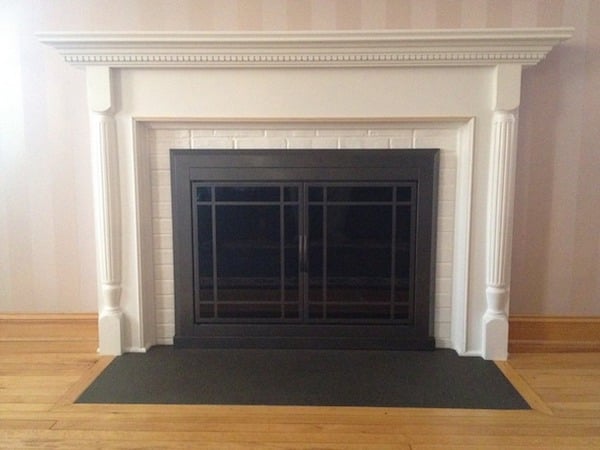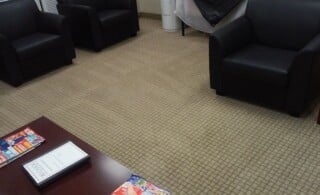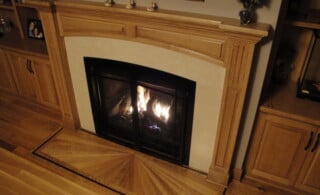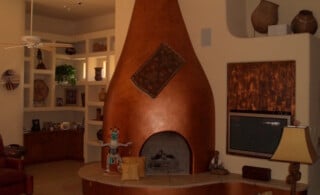
While a fireplace can certainly be used to create additional warmth during those cold winter months, most would agree that, though the heat is nice, a fireplace’s real benefit has more to do with atmosphere. Relaxing or entertaining by a fire can create a scenario that a furnace, boiler, or space heater simply cannot match. This scenario, however, can degenerate quickly if your fireplace isn’t cleaned regularly. A clean fireplace is not just nice to look at and operate, but is also a necessity for safe operation, as well.
Keeping a Clean Fireplace
Though most households are pretty diligent about sweeping up any scattered ashes in and around the fireplace that can detract from the overall look of the room, having a clean fireplace is really more about the components that can’t be readily seen. Flue and chimney cleaning are, in actuality, far more important than removing visible debris. Some die hard do-it-yourselfers might try to attempt this task, but in most cases, chimney cleaning is a job that is well worth the cost of hiring a chimney professional.
Chimney Cleaning
Fireplace inserts are heavy, often weighing more than 400 pounds. Since wood burning inserts need to be removed when the chimney is being cleaned and maintained, they can be awkward and heavy to handle. Like many other aspects of chimney cleaning, maneuvering the insert requires some technique that most homeowners are simply not well-versed in (spending a little time fiddling with a fireplace insert can make a pretty solid case for hiring a professional chimney cleaning service, in itself). In some cases, however, you do not have to remove the insert to clean the chimney. The insert can stay in place during cleaning if you install a full relining collar, a stainless steel pipe that connects to the insert and goes to the top of the chimney.
Ready to start your fireplace cleaning?
Find ProsThe chimney flue is the pipe that carries the hot gases and soot up and away from the fireplace. They come in two basic styles, metal (prefab) and masonry. There should be metal caps over the flue openings. These hood-like structures prevent rain and snow from falling into the flues, and protect the chimney from downdrafts that can force smoke and fumes back into the house. Many homes are not equipped with caps, even though they are inexpensive and can prevent a host of problems.
The flues are also usually equipped with wire mesh to prevent birds, squirrels and other animals from nesting in the chimney. The same mesh will prevent burning ash from reaching the roof or other combustible materials. This mesh should be cleaned from time to time.
Clean Fireplaces to Ensure Safe Operation
When left unattended to, creosote (a gummy black film that is made up of smoke residue) can build up inside your chimney. Unfortunately, some homeowners already know the importance of chimney cleaning and keeping a clean fireplace all too well; creosote, when it ignites, is responsible for some of the most devastating residential fires in the country. If your fireplace gets used only periodically, an annual chimney cleaning should do the trick. For those who burn wood more often, keeping a clean fireplace and chimney will likely require professional service multiple times a year. If it’s your first time calling for chimney cleaning, your service professional will need to know what type of roof access you have so he or she can plan on what safety equipment to bring.
 Air Duct Cleaning
Air Duct Cleaning  Cleaning Your Exteriors With a Pressure Washer
Cleaning Your Exteriors With a Pressure Washer  Cleaning Wool Berber Carpet
Cleaning Wool Berber Carpet  Choose the Best Fireplace for Your Home
Choose the Best Fireplace for Your Home  Add Southwestern Feel with a Kiva Fireplace
Add Southwestern Feel with a Kiva Fireplace 

What is the cost if a cleaning and chimney liner